Near the top of my to-do list every fall is to tuck in a few more daffodil bulbs into my garden. As one of the first flowers to bloom in abundance each spring, daffodils and narcissus are always a welcome sight after many months of gray winter days.
These versatile, beautiful blooms are a must-have for any cutting garden. Yet, you mention daffodils, many floral designers will cringe. This is often because they instantly think of the the traditional big yellow trumpet bell blooms. But, trust me, there is a world of beauty beyond the bags of bright yellow King Alfred cultivars commonly found at most garden centers.
Daffodils and narcissus come in so many incredible shapes, forms, scents and sizes and make fantastic additions to seasonal floral designs. A couple years ago, I went a little overboard while ordering different varieties in preparation for writing and shooting photos for my book, Cut Flower Garden. When spring finally rolled around, all of the time it took to plant all of those bulbs was totally worth it, as I am rewarded with armloads of beautiful and unusual blooms every spring.
Staples of the spring cutting garden
Here at Floret we grow dozens of beautiful varieties and each year expand our collection. This diverse flower group is rarely plagued by pests or disease, plus deer and other varmints usually steer clear of them. Narcissus come in a wide range of different shapes and sizes and many even have a sweet scent.
Fall-planted bulbs produce hardy, easy to grow spring flowers that thrive in both sun or part shade. As an added bonus, bulbs multiply rapidly, and in just 2 to 3 years after planting, you’ll have at least double what you started with, making them reliable workhorses in the early spring garden.
After a long, super busy summer, we’re all ready for some much-needed rest. But I know that if we can just power through a little longer and tuck the bulbs in this fall, the reward next spring will be worth it.
Planting Tips
There are two different methods for growing these cheerful spring bloomers, depending on whether you simply want to add color to your spring landscape or harvest them in abundance as cut flowers. No matter how you plant them, be sure to pick a spot that gets at least partial sun and doesn’t have standing water, since really wet soils will encourage bulbs to rot.
In the garden, narcissus make the most impact when planted en masse. For a dazzling display, I recommend ditching the bulb planter and instead plant groupings of at least 10-20 bulbs.
Simply dig out a generous circle of soil, 6-8 inches deep, mix in a little bulb fertilizer, compost, and then plant your bulbs at a depth 3 to 4 times the bulb’s height, and as far apart as they are wide. Once your bulbs are securely in place, water deeply and then refill the hole with the soil you removed earlier. Add a few inches of well rotted compost on top to act as a mulch. Be sure to insert some type of stake so you remember where you planted them.
If your intention is to grow narcissus solely for cutting then you can follow this same method but plant bulbs in long trenched rows for easy harvesting.
Harvest & Care Tips
In the spring, harvest blooms that haven’t fully opened. If picked when the buds are fully colored, but still slightly nodding (also known as the “goose neck” stage) a solid week of vase life can be expected. Wear gloves when harvesting narcissus as they ooze a slimy sap that can cause skin irritation.
This slimy sap is also toxic to other flowers and will shorten their vase life significantly. To avoid affecting other blooms in an arrangement, you’ll need to “condition” the narcissus first. To do this, place freshly cut stems into cool water, on their own, for 2 to 3 hours; during that time, the stem ends will callus over and the toxic sap will stop flowing. After that, don’t recut the narcissus stems when adding them to arrangements because the sap will start leaking all over again.
Of course, you can create an arrangement solely of narcissus, either just one variety or several, and the sap won’t be an issue.
Floret's Favorites
Over the years we have conducted trials on dozens of different narcissus looking for varieties that have exceptional qualities: good weather resistance, fragrance, unique coloring, long vase life, and beautiful flower forms.
Here are a few of my latest favorites:
Narcissus ‘Delnashaugh’ The regal flowers on this beautiful variety conjure images of water lilies. The frilly, peachy centers look like layers of petticoats. Tall, sturdy stems support these treasures in the vase or garden.
Narcissus ‘White Lion’ The large fragrant blooms of this magnificent variety are made up of multiple layers of buttercream and ivory petals. Each ruffled bloom sits atop a tall, strong stem.
Narcissus ‘Yellow Cheerfulness’ One of the latest varieties to flower, this cheery bloomer has multiple buttercream blossoms that sit atop tall stems. They are highly scented and combine well with anything.
Narcissus ‘Extravaganza’ This spectacular bloomer is named for its full orange-pink trumpet strikingly framed by ivory white flower petals. There are few flowers that embrace spring’s arrival like ‘Extravaganza.’
‘Pink Charm’ The pretty white petals contrast beautifully with the large central cup and the edges of which look like they were dipped in the perfect shade of peachy-pink.
‘Replete’ The super ruffled flowers of this fragrant variety always remind me of fancy ladies in petticoats. A showy blend of cream, peachy pink, and soft orange. One of the best on the market and a must grow for flower arranging.
You can find all of the above, plus more new narcissus offerings in the Floret Shop.

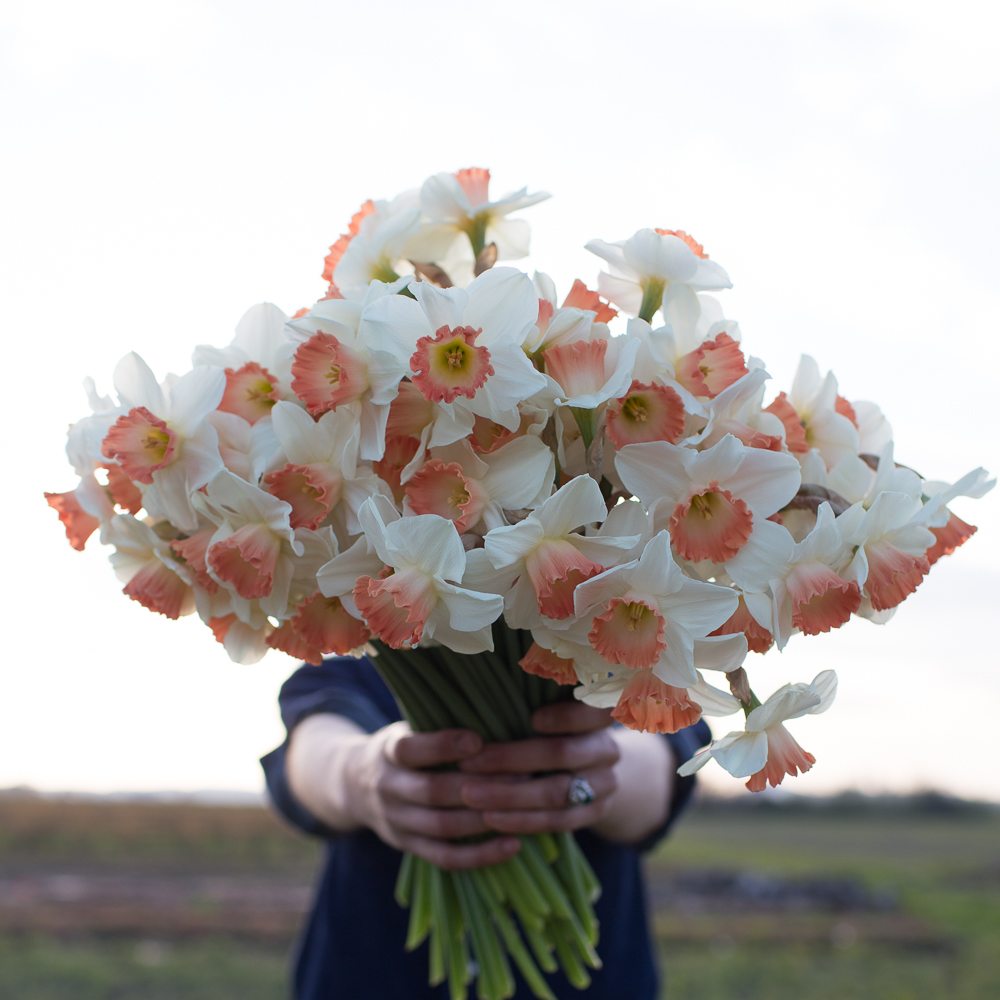
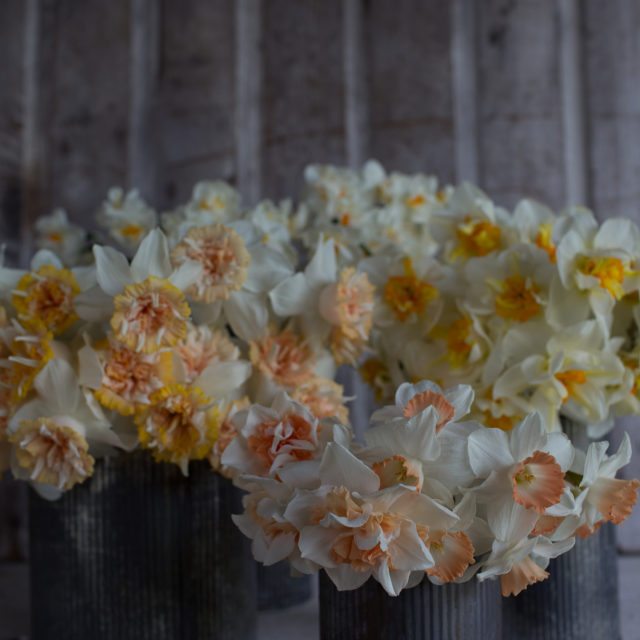

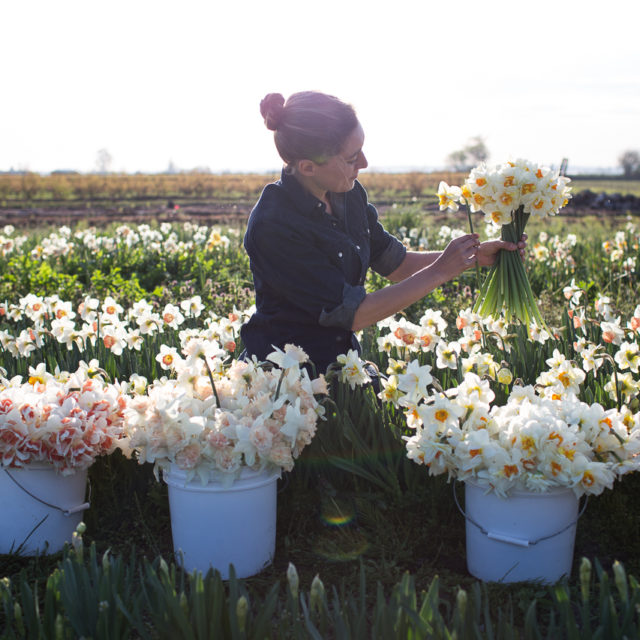
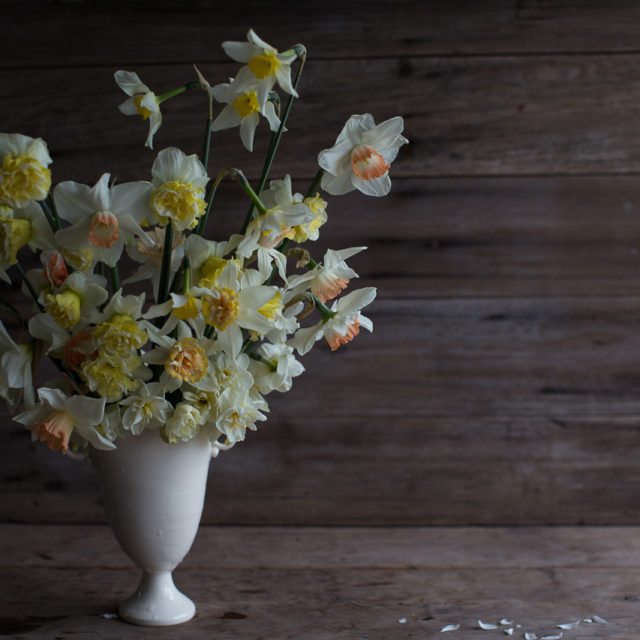

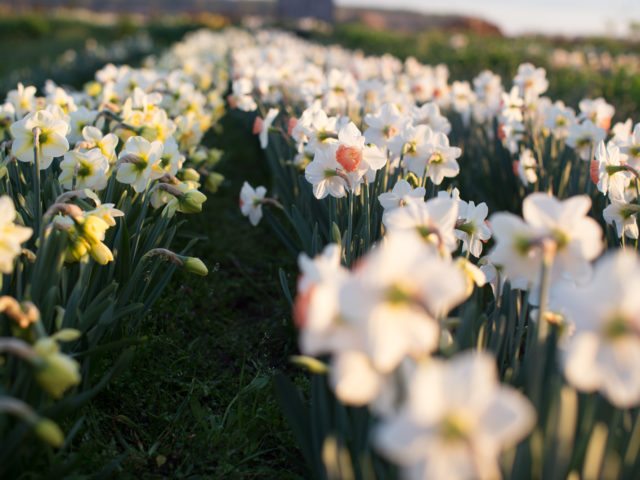
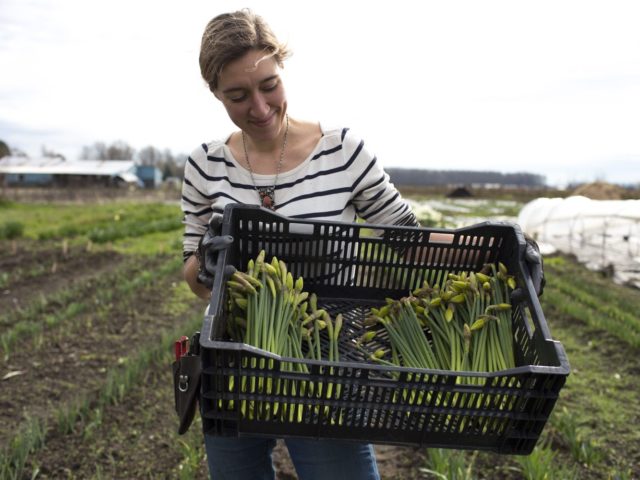
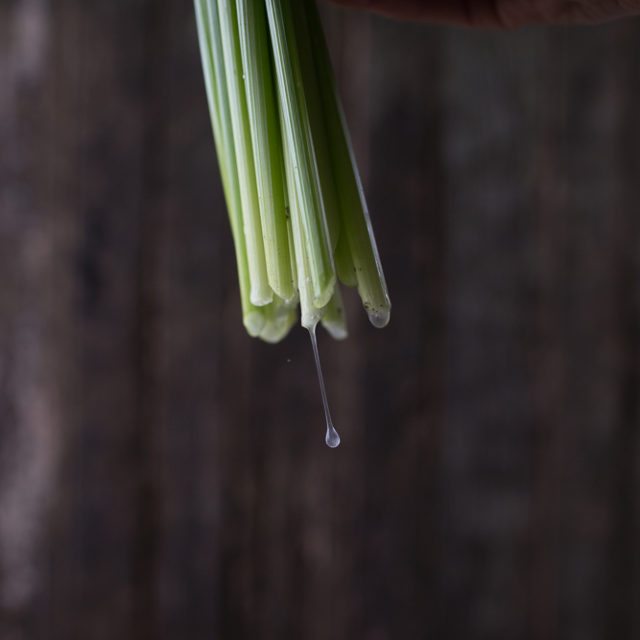
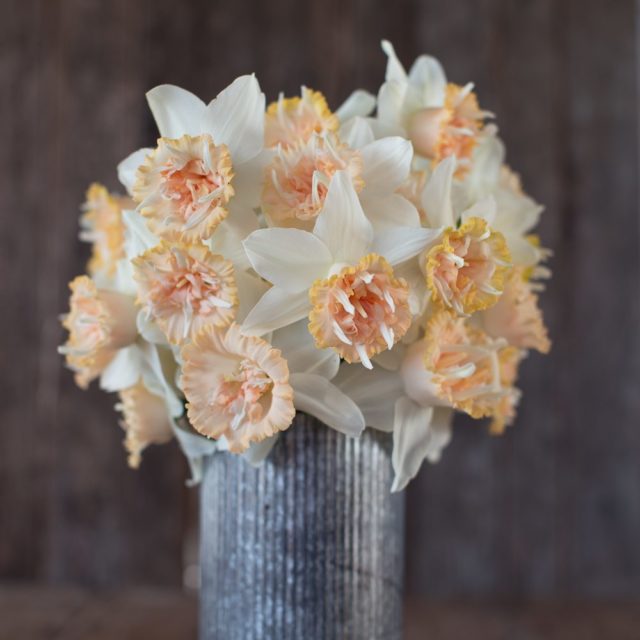
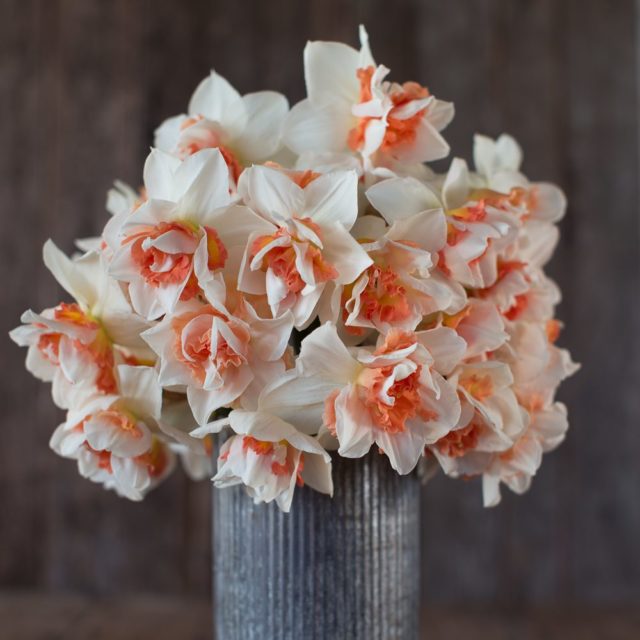
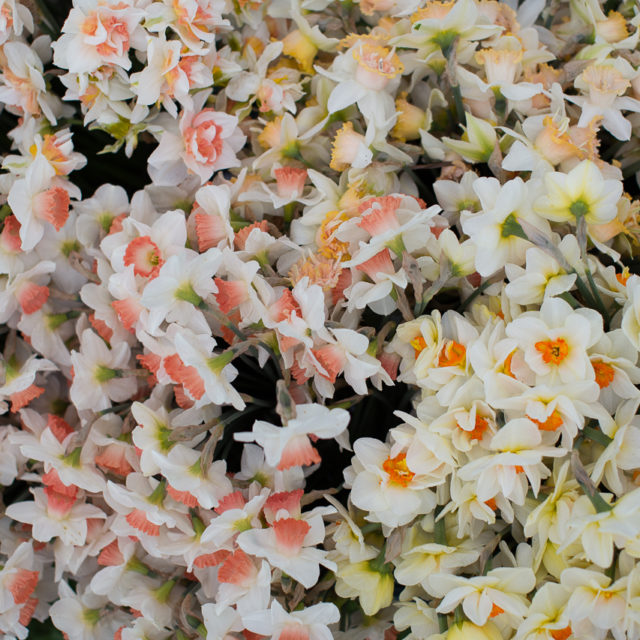

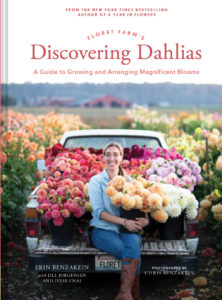
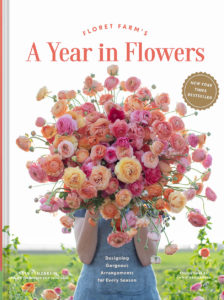


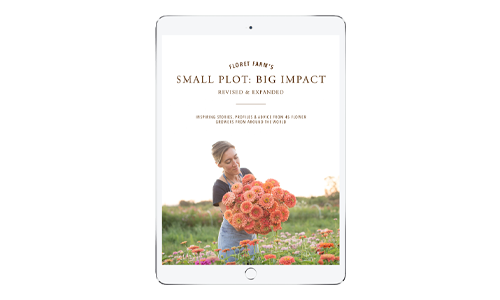
Shannon King on
Narcissus and Daffodils are by far my favourite flower. They tell me that spring is here to stay. And they’re just so cheerful after 5 long months of winter. My flower beds overflow with all kinds of varieties in spring from tiny ‘minnow’ to the largest trumpets. Ruffles and colours and scents. I can’t wait to plant rows and rows for cut flowers